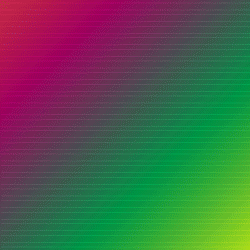How To Use The Old Headphones You Love With The New iPhone 7

You’ve probably heard the news: Apple’s brand-new smartphone, the iPhone 7, won’t have the standard 3.5mm analog audio jack. Sure, it’ll pair to wireless headphones, including the company’s all-new Airpods, but what if you’ve got a great pair of wired cans with which you’re not willing to part? What if you don’t have the cash on hand to make a jump to wireless right now (the Airpods will cost $159 at launch)? Or what if you just can’t be bothered?
Thankfully, you don’t need to conform to Apple’s vision in order to use your favorite tethered headphones. There are ways, albeit in some cases unintuitive, around the iPhone 7’s newly imposed limitation. Some involve Bluetooth. Others involve wired adapters. And others still require a bit more elbow grease. But with a bit of determination and perseverance, you’ll have your reliable ‘ole studio cans hooked up to your shiny new iPhone 7 in no time.
Lightning-to-3.5mm adapter
If you can’t beat ’em, join ’em. The simplest answer to the iPhone 7’s audio jack problem is to use the included Lightning-to-3.5mm adapter in the box. While carrying around an adaptor everywhere may not be ideal, it’s a simple solution right from the start.
That said, apart from the inconvenience of keeping track of it, a Lightning adapter does present an obvious dilemma: How do you charge the iPhone 7 while your legacy cans are plugged in? Apple has historically left those sorts of niche use cases unaddressed, but there’s a good chance third-party manufacturers will create a “workaround” product.
Just how much third-party Lightning-to-3.5mm adapters will cost is anyone’s guess, but given the price Apple and its accessory partners typically charge for Lightning adapters between $20 and $30, typically we’d be surprised to see them run much above that range.
High-end Digital-to-Analog Converter (DAC)

If an adapter doesn’t suite your fancy, you may want to enter the world of Digital-to-Analog Converters (DACs). As the name implies, DACs convert the digital audio files and streaming music on your phone into analog signals compatible with standard headphones. While that’s essentially what any Lightning to 3.5mm adapter will do, a DAC is a more audiophile-friendly solution. Virtually all DACs you’ll find on the market do a much better job of transferring digital signals to analog for a clearer, more accurate rendition of your music.
Hands On: CHORD MOJO
Apart from a higher price point, the real problem is narrowing down just which DAC to buy. There’s the $70 Cobble, a DAC which supports audio files at up to 24bit/192 kHz resolution (aka high resolution audio) and sports a built-in microphone. On the other end of the spectrum there’s the Chord Mojo, a $600 DAC which features custom-designed components, two 3.5mm audio jacks, and studio-quality playback up to 32-bit/768 kHz if you can find any audio files at that ludicrous resolution. (Note: Up to now, 24bit/48kHz has been the iPhone’s max resolution output, and Apple has not mentioned an upgrade for the iPhone 7.) There are also dozens of other choices in between.
APPLE LIGHTNING DOCK

The included Lightning adapter isn’t the only Lightning-to-3.5mm solution the Apple produces. The company’s iPhone Lightning Dock isn’t exactly portable, but it does sport an audio port on the rear, and it’s capable of a lot more, besides: it can connect to a computer via USB cable for the purpose of syncing your iPhone and recharging its battery, it can connect to an electrical outlet for charging, and it packs built-in speakers.
The potential use cases as far as headphones are concerned are relatively narrow, granted. But if you tend to use your headphones bedside, the dock might be a viable solution.
Bluetooth adapter

There’s another option that involves fewer wires, if you don’t mind dealing with dongles: a Bluetooth adapter. Most pair relatively easily to your phone and, better still, offer functionality and features your headphones alone might now. Some sport a microphone (or even dual microphones) that essentially turn your headphones into compact headsets. They also have a range of around 33 feet, though that range will be cut significantly if you bring barriers like doors or walls into the mix. Some also double as a Bluetooth transmitter, allowing you to plug your phone in directly, and stream audio to a speaker or wireless headset.
The Best Bluetooth adapters: Turn your headphones wireless with these 5 Bluetooth adapters
That’s not to say wireless solutions are without their potential complications. Bluetooth adapters can vary widely in battery capacity some last as long as eight hours on a charge, while others last as short as four. Adapters can also deliver audio quality that’s not quite up to par with top-end Bluetooth headphones, let alone wired or Lighting cans. But Bluetooth’s undoubted advantage lies in its convenience having to contend with fewer wires is never a bad thing.


Post a Comment